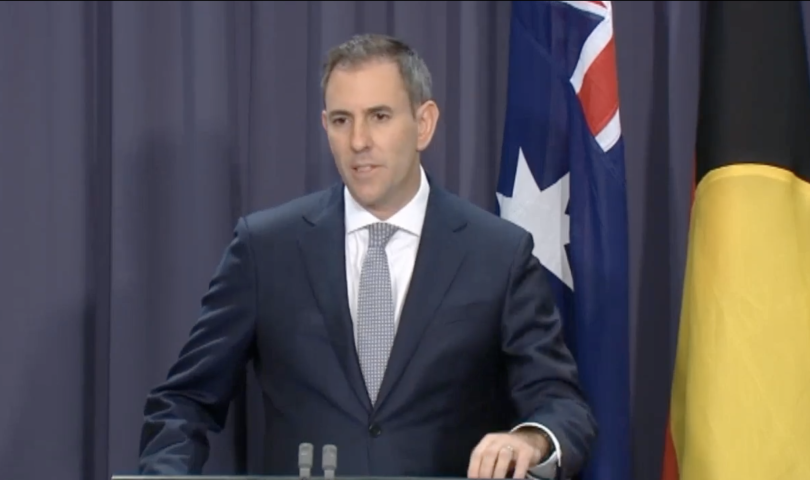Labor delivered a modest increase in foreign aid in October last year. In this budget, as with the last, aid falls over the forward estimates, after adjusting for inflation, this time from $4.8 billion in 2023-24 to $4.7 billion in 2025-26.
There is a welcome commitment to give DFAT an additional $36.8 million over four years to improve aid effectiveness and transparency. There is also increased funding of $1.9 billion (most of it not classified as aid) for Defence, the Australian Federal Police and other agencies to work across the Pacific. And there are a number of additional expenditure commitments on Pacific labour mobility: more staff to look after workers, and access to Medicare for some.
But the big story of this aid budget is the return to indexation. Normally, governments give aid and other expenditure projections only for three years after the budget year, the so-called forward estimates. However, this year the government has decided to project aid out for a full decade to 2036-37, that is, for a decade starting the year after the forward estimates end.
In the government’s own words, it has “locked in” annual increases of 2.5%, the projected rate of inflation in 2026-27, all the way from 2026-27, the last year of the forward estimates, to more than a decade later, 2036-37.
Assuming that inflation stays at the projected 2025-26 level of 2.5%, this means that aid will stabilise, in today’s prices, at $4.7 billion. In some ways, this is a victory: it is, in today’s prices, about $600 million more than the Coalition was promising for 2025-26. But, then again, even that former Coalition government had promised a return to indexation over the forward estimates. Did anyone really think that Labor would keep cutting aid in real terms over the next five or ten years?
In any case, the government has gone further, portraying the decade-long indexation commitment not as a stabilisation but as a “long-term rebuild of Australia’s international development program”.
It is hard to see the rationale behind this framing. Indexation will, by definition, prevent further aid cuts, but hardly constitutes a “rebuild”. A rebuild would mean a return towards an aid budget of a size when Labor last left office, not $4.7 but $6.5 billion. Rebuilding would also mean that we would lift our aid/GNI ratio. This was in excess of 0.3% when Labor was last in power. It has now fallen to 0.19%, and with indexation and economic growth continuing at its projected 2025-26 level (2.75%), Australia’s ODA/GNI ratio will fall to below 0.14% over the next decade.

This means that Australia is consigned to remain an aid minnow. As our Aid Tracker shows, Australia’s aid importance has declined sharply over the last decade. Since 1995, Australia has contributed, on average, 2.3% of global Official Development Assistance. Australia’s share exceeded 4% in 2012, the last year of aid scale-up, but is now at a new twenty-seven year low of 1.5%. Our ranking among OEDC donors has fallen from ninth highest in 1995 to 13th in 2013 to 27th (or fourth lowest) in 2022.

Australia’s global share and ranking have fallen so sharply because, whereas we have been cutting aid, most countries have been increasing it. Adjusting for inflation, Australia’s aid is about back where it was in 2008, more than a decade ago. Global aid is significantly up on that, by 85%, or almost double. Even if we take out the recent massive increases in aid for Ukraine and for in-country refugees, global aid is up by 48% or almost one half. In this environment, simply promising not to cut aid any more will do nothing to improve Australia’s global aid standing. Indeed, the budget projections put us on track to replace Greece as the OECD’s least generous donor. None of this is consistent with a global context in which the reduction of extreme poverty has virtually come to a halt for the first time in decades and “polycrises” loom.
Why Labor has decided to be so unambitious in relation to foreign aid is a question only it can answer. Many thought that, while it was starting slowly, it would become more adventurous, especially if it were to win a second term. Perhaps it will. But indexation is as much an undertaking not to increase aid beyond inflation as it is a promise not to cut. The Labor government could not have more clearly signalled its timidity on foreign aid than it did through yesterday’s budget.
Devpol’s Australian Aid Tracker has been updated with the new budget numbers.
This blog was corrected on 23 May 2023 to replace 2037-38 by 2036-37 as the last year of the ten-year indexation period beginning after the forward estimates.
Disclosure
This research was undertaken with the support of The Bill & Melinda Gates Foundation. The views represent those of the authors only.



It is perhaps not timid but very sensible that the Australian government is focused on the “long-term rebuild of Australia’s international development program” before any rapid increases in the aid budget. The DevPolicy article (5 May) “Why are two in five Australian aid investments rated unsatisfactory on completion?” raises concerning issues on the current quality of the aid program i.e. 40% of aid investments at completion independently assessed as “failures”. This equates to annual aid spending of $1.9 billion (based on the current $4.7 aid budget).
Hi Neal,
That’s a fair comment. It’s like the old joke “The food is terrible—and such small portions!” I suppose I have always believed in the mantra “more aid and better aid”, and am not prepared to give up on that just yet!